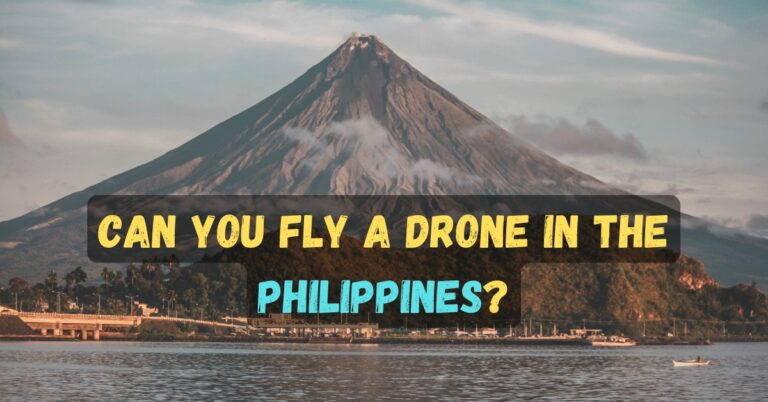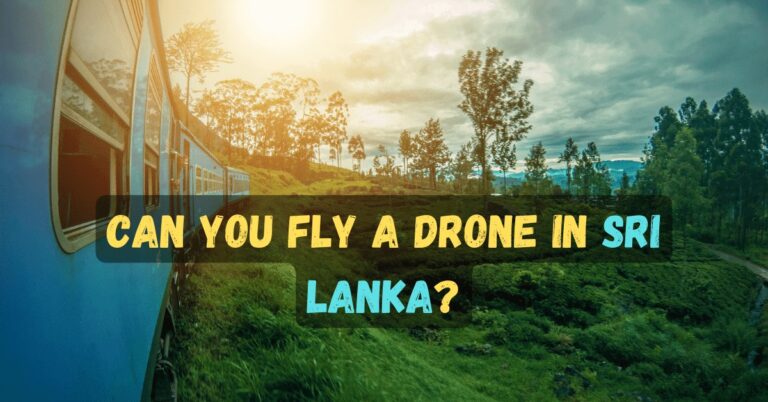Can You Fly a Drone in San Diego? (Drone Laws in San Diego)

San Diego has emerged as a popular destination for drone enthusiasts, drawing both hobbyists and professionals to its scenic landscapes and dynamic urban environments.
The city’s diverse settings, ranging from its picturesque coastline to its bustling downtown, provide an ideal canvas for aerial photography and videography.
As drones become more prevalent in capturing stunning visuals, understanding the local regulations governing their use is of paramount importance.
The allure of San Diego’s varied terrains, including its beaches, parks, and architectural landmarks, offers unique opportunities for drone operators.
These opportunities have contributed to the growing popularity of drones, not only for recreational purposes but also for professional applications in fields such as real estate, filmmaking, and environmental monitoring.
The ability to achieve breathtaking aerial shots has become a significant draw for many operators looking to leverage the capabilities of drone technology.
However, with the increasing number of drones taking to the skies, the need for comprehensive knowledge of local laws and regulations has become essential.
The Federal Aviation Administration (FAA) sets overarching guidelines for drone operations in the United States, but additional local rules specific to San Diego also apply.
These regulations are designed to ensure the safety of both drone operators and the general public, while also protecting the privacy and property rights of residents.
As such, it is crucial for anyone planning to fly a drone in San Diego to familiarize themselves with these rules to avoid potential fines or other legal repercussions.
Awareness and adherence to these regulations not only foster responsible drone usage but also help maintain the integrity of the airspace and the enjoyment of the city’s beautiful vistas for everyone.
Federal Drone Regulations
The Federal Aviation Administration (FAA) governs drone use across the United States, ensuring safety and compliance through a set of comprehensive regulations.
One of the primary requirements imposed by the FAA is drone registration. All drones weighing between 0.55 pounds and 55 pounds must be registered with the FAA prior to their operation. This applies to both recreational and commercial drone users.
Maximum altitude limits are another crucial aspect of federal drone regulations. Drones are not permitted to fly higher than 400 feet above ground level, unless they have specific authorization from the FAA.
This altitude restriction aims to prevent potential collisions with manned aircraft operating at higher altitudes.
Additionally, the FAA mandates that drone operators maintain Visual Line of Sight (VLOS) with their drones at all times during flight.
This means that the drone must be within the unaided sight of the operator, ensuring that the operator can see and avoid potential hazards.
The rules for recreational and commercial drone operators differ significantly. Recreational drone operators, also known as hobbyists, must adhere to the FAA’s guidelines for model aircraft, which include flying only for fun or personal enjoyment.
They are also required to follow the safety guidelines of a community-based organization, such as the Academy of Model Aeronautics.
On the other hand, commercial drone operators, who use drones for business purposes, must obtain a Remote Pilot Certificate from the FAA.
This requires passing an aeronautical knowledge test, adhering to Part 107 regulations, and ensuring that the drone weighs less than 55 pounds.
Commercial operators must also comply with additional operational limitations, such as flying only during daylight hours and yielding the right of way to manned aircraft.
Understanding and complying with these federal drone regulations is essential for anyone looking to operate a drone within the United States, including in San Diego.
These rules not only promote safety but also help to mitigate potential conflicts between drone users and other airspace users.
Wondering How to Properly Store DJI Drone Batteries? We’ve got you covered!
State of California Drone Laws
In California, drone operators must adhere to both federal and state regulations, ensuring the responsible and safe usage of drones.
The state-level drone laws in California primarily focus on privacy protection, safety around critical infrastructure, and specific registration requirements, which complement federal guidelines established by the Federal Aviation Administration (FAA).
One of the critical aspects of California’s drone laws is the emphasis on privacy. In 2015, the state passed Assembly Bill 856, which makes it illegal to use a drone to capture visual or sound recordings of someone engaging in personal or familial activities without consent.
This legislation aims to prevent invasions of privacy, particularly in residential areas where individuals expect a higher degree of seclusion.
Additionally, California imposes restrictions on flying drones near critical infrastructure. According to Penal Code Section 4577, drone operations are prohibited within 250 feet of critical infrastructure facilities, such as power plants, water treatment centers, and transportation hubs.
This measure is designed to protect these essential services from potential threats or disruptions caused by unauthorized drone activity.
California also has specific requirements regarding drone registration. While federal law mandates that drones weighing over 0.55 pounds must be registered with the FAA, California further requires that operators provide proof of this federal registration upon request by law enforcement or other authorities.
This ensures that all drones are accounted for and their operators can be identified if needed.
It’s important to note that while California state laws align with federal regulations in many respects, there are unique provisions that drone operators must be aware of.
For instance, California’s focus on privacy and critical infrastructure protection extends beyond federal guidelines, reflecting the state’s proactive stance on safeguarding its residents and key facilities.
Therefore, drone pilots in California must stay informed about both federal and state regulations to ensure compliance and avoid penalties.
San Diego-Specific Drone Regulations
When it comes to flying drones in San Diego, drone operators must adhere to a range of local ordinances and regulations designed to ensure public safety and privacy.
San Diego’s drone laws are more restrictive in certain areas, necessitating a thorough understanding of these regulations before taking to the skies.
One of the key restrictions pertains to flying drones in public parks. While some parks may allow drone usage, it is crucial to check for any posted signs or specific park regulations, as many popular parks have designated no-fly zones.
For instance, Balboa Park, one of San Diego’s most frequented recreational areas, has stringent restrictions that prohibit drone operations without special permission.
Similarly, beaches in San Diego come with their own set of rules. The coastal areas are often bustling with activities, and to prevent any potential hazards, drone flights are generally restricted.
Operators are advised to consult local guidelines or contact beach authorities to confirm if flying a drone is permissible along the shorelines.
Proximity to airports is another critical factor. San Diego is home to several airports, including the busy San Diego International Airport.
The Federal Aviation Administration (FAA) mandates that drones must not be flown within a five-mile radius of any airport without prior notification and permission. This rule is strictly enforced in San Diego due to the high air traffic.
Beyond these location-specific restrictions, San Diego also imposes certain city-specific requirements for drone operators.
Depending on the nature and purpose of the drone flight, operators might need to obtain permits or adhere to additional guidelines such as flying below 400 feet and maintaining visual line-of-sight at all times.
It is always advisable for drone enthusiasts to stay updated with the latest city ordinances and FAA regulations to ensure compliance.
Understanding these San Diego-specific drone regulations is essential for anyone looking to enjoy the recreational or professional use of drones within the city limits.
Proper adherence to these rules not only ensures safety but also helps in fostering a responsible drone-flying community.
Curious about What Are The Safety Features of DJI Drones? Learn more about the built-in smarts that keep your flight smooth and worry-free!
Restricted and No-Fly Zones in San Diego
San Diego, a city known for its beautiful coastlines and vibrant urban areas, also hosts a variety of restricted and no-fly zones where drone operations are prohibited.
These regulations are essential to ensure safety, privacy, and the protection of sensitive areas. One prominent no-fly zone is around military bases such as Naval Base San Diego and Marine Corps Air Station Miramar.
Due to national security concerns, flying drones near military installations is strictly forbidden and can result in severe penalties.
Another significant set of no-fly zones includes stadiums and large public gatherings. For instance, during events at Petco Park or Snapdragon Stadium, drone flights are prohibited to safeguard attendees and maintain event security.
This restriction is in place from one hour before the event until one hour after it ends, covering a radius of several miles.
Additionally, drone enthusiasts must be aware of restrictions within national parks. San Diego is home to several, including the Cabrillo National Monument and areas managed by the National Park Service.
These locations are protected to preserve wildlife and the natural environment, making drone flights illegal without special permits.
To assist drone operators in navigating these restrictions, numerous resources are available. The Federal Aviation Administration (FAA) provides the B4UFLY app, which offers real-time information on airspace restrictions and no-fly zones.
Additionally, the AirMap app is another valuable tool that helps drone pilots plan their flights safely by displaying up-to-date airspace data.
By understanding and adhering to these no-fly zones, drone operators can enjoy their flights while ensuring compliance with local laws and regulations.
Proper planning and the use of available resources can prevent legal issues and contribute to the safe integration of drones into San Diego’s airspace.
Best Practices for Safe Drone Flying
When flying a drone in San Diego, adhering to best practices is crucial for ensuring safety and compliance with local regulations.
One of the primary guidelines is to maintain Visual Line of Sight (VLOS) at all times. Pilots should always keep their drone within sight, which helps in quick maneuvering to avoid obstacles and ensures better control over the device.
Additionally, staying away from crowded areas reduces the risk of accidents and disturbances. Flying over large gatherings or congested spaces can pose significant safety hazards and should be avoided.
Respecting privacy is another critical aspect of responsible drone flying. Drones equipped with cameras have the potential to invade personal privacy if not used considerately.
Always steer clear of private properties and avoid capturing images or videos without consent. This not only fosters goodwill among the community but also aligns with legal expectations regarding privacy rights.
Weather conditions play a significant role in safe drone operations. Before each flight, it is essential to check the weather forecast and evaluate if conditions are suitable for flying.
High winds, rain, or fog can adversely affect a drone’s performance and increase the likelihood of crashes. Pilots should be prepared to reschedule their flights if the weather is unfavorable.
Pre-flight checks are indispensable for ensuring a smooth and secure flight. Inspect the drone for any physical damage, ensure the batteries are fully charged, and verify that all systems are functioning correctly.
Additionally, familiarize yourself with the designated flight area and be aware of any no-fly zones or temporary restrictions.
Lastly, having a set of emergency procedures in place is critical for handling unexpected situations.
This includes knowing how to quickly land the drone safely in case of a malfunction, loss of signal, or sudden weather changes.
Familiarity with emergency protocols can prevent potential accidents and ensure the safety of both the drone and the public.
Curious about how far DJI drones can fly? Check out our info on maximum flight range of DJI drones.
Obtaining Necessary Permits and Permissions
Flying a drone in San Diego requires adherence to specific regulations, including obtaining the necessary permits and permissions.
The process is designed to ensure safety and compliance with local, state, and federal laws. For recreational drone pilots, permits are generally not required unless flying in restricted areas such as near airports, national parks, or over people.
However, it is crucial to check for any local ordinances that might impose additional restrictions.
Commercial drone operations in San Diego necessitate obtaining a Remote Pilot Certificate from the Federal Aviation Administration (FAA).
Additionally, commercial drone pilots must comply with Part 107 regulations, which include passing a knowledge test and adhering to operational limitations.
For specific projects, such as filming or aerial surveying, a special waiver or authorization from the FAA may be required.
To apply for permits in San Diego, drone operators need to contact the local authority responsible for the area where they plan to fly.
This could be the city’s parks and recreation department if flying over city parks or the Port of San Diego if flying near the waterfront.
The application process typically involves submitting detailed information about the planned drone activity, including the flight area, duration, and purpose.
The cost of obtaining a permit can vary depending on the complexity and scope of the drone operation.
Fees might range from a nominal processing fee for simple recreational use to higher charges for commercial activities requiring extensive coordination and oversight. It’s advisable to budget for these costs and inquire about them during the initial planning stages.
Processing times for permits can also vary. While some permits might be issued within a matter of days, others could take several weeks, especially if additional approvals or consultations are necessary.
Therefore, it is recommended to apply well in advance of the planned drone activity to avoid any delays.
Special considerations are necessary for commercial drone operations, particularly those involving filming or large-scale surveying.
These activities may require additional permissions from property owners, coordination with local law enforcement, and adherence to specific safety protocols.
Ensuring compliance with all requirements not only avoids legal issues but also promotes safer and more responsible drone usage in San Diego.
Wondering What Accessories are Available For DJI Drones? We’ve got you covered! Check out our guide for a complete rundown.
Resources and Further Reading
For drone operators eager to explore the skies over San Diego, understanding and adhering to local, state, and federal regulations is paramount. Here is a curated list of resources to help you stay informed and compliant.
Federal Aviation Administration (FAA) Guidelines:
The FAA regulates all drone activities in the United States. For comprehensive guidelines, visit the FAA’s UAS (Unmanned Aircraft Systems) page. This resource covers registration requirements, airspace classifications, and operational restrictions for both hobbyist and commercial drone pilots.
California State Resources:
Drone laws can vary by state, and California has specific regulations that operators must follow. The California Department of Transportation’s Aeronautics Program provides valuable insights into state-level rules. Additionally, consult the California Attorney General’s guidelines on drone privacy to ensure you respect privacy rights while flying.
San Diego City Websites:
Local ordinances also play a crucial role in drone operations. The City of San Diego’s Aviation Division offers detailed information on city-specific drone regulations. For updates on temporary flight restrictions or special events, the San Diego International Airport’s official website is an essential resource.
Forums and Communities:
Engaging with fellow drone enthusiasts can enhance your flying experience. Join online forums such as Drone Pilots Community or RC Groups, where you can exchange tips, share experiences, and seek advice. Social media platforms like Facebook and Reddit also host active drone communities.
Local Drone Clubs:
Connecting with local drone clubs can provide hands-on learning opportunities and foster community engagement.
Organizations like the San Diego Drone Club regularly host meetups, workshops, and flying events. These clubs are excellent for networking and gaining practical insights from seasoned pilots.
Staying informed and connected is key to a safe and enjoyable drone flying experience in San Diego. Utilize these resources to ensure you are well-prepared and compliant with all relevant regulations.







